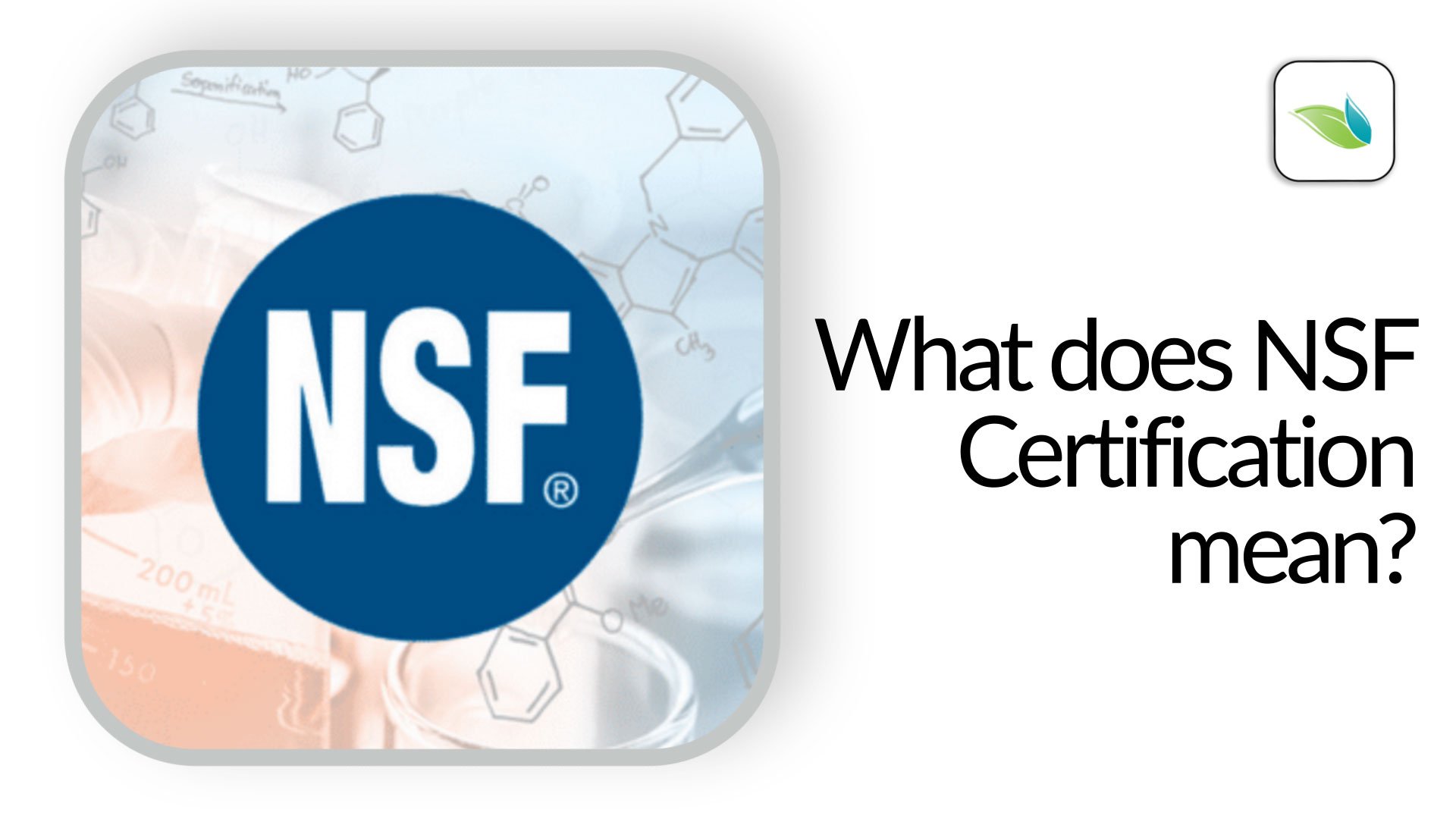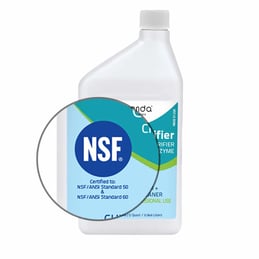What Does NSF Certification Mean?

The organization referred to in this article is NSF International, formerly the National Sanitation Foundation. It is separate from the National Science Foundation. Founded in 1944, it exists to provide third-party testing and validation of products available to the public. Directly from their website:
Founded in 1944, our mission is to protect and improve global human health. Manufacturers, regulators and consumers look to NSF International to develop public health standards and certifications that help protect food, water, consumer products, and the environment. As an independent, accredited organization, NSF tests, audits, and certifies products and systems as well as provide education and risk management.
NSF International sets and tests public health and environmental safety standards
In the majority of U.S. states, virtually every product in a commercial kitchen is NSF certified. Examples: sinks, dishwashers, small appliances, cutting boards, etc.. The standards are important for sanitation purposes; without standards, safety would be virtually impossible to manage and control.
Part of the reason that the NSF standards are so widely accepted by governmental regulatory bodies is how thorough the product testing requirements in the standards are. The development process of an NSF Standard serves as a neutral medium in which industry, official regulatory agencies (including the EPA and state health departments), and product end users come together to address issues involving products with end uses that impact public health and the environment. NSF International was conceived and is administered as a public service organization.
The NSF website contains a page that categorizes all of the standards and the products that these cover. You can search the NSF Listings to see which companies and products meet those standards. For example, every Orenda product meets NSF/ANSI Standard 50 (Products for Pools, Spas, Hot Tubs, and Other Recreational Water Facilities), which means they are certified as safe for use in recreational water, up to the doses indicated by the NSF.
So, how are products certified?
The NSF Certification Process
Directly from their website:

Choosing a product that is certified by NSF lets you know that the product complies with stringent public health standards and NSF certification policies. From extensive product testing/material analysis to unannounced plant inspections, every aspect of a product’s compliance is thoroughly evaluated before it can earn NSF certification.
Most importantly, NSF certification is not a one-time event, but involves regular on-site inspections of manufacturing facilities and regular re-testing of products on a routine basis to ensure that they continue to meet the same high standards required to maintain certification over time. If, for any reason, a product fails to meet one or more of the certification criteria, NSF may take enforcement actions including product hold, product recall, public notification, or de-certification.
This rigorous certification process holds companies accountable in all aspects of their manufacturing. When a product is certified, it earns the right to bear the trademark NSF® mark, as shown on our bottles.
American National Standards Institute (ANSI)

ANSI accredits organizations (like the NSF) that establish product standards and certify products. They exist to ensure that standards development processes and certification programs are of high quality. ANSI evaluates and monitors NSF standards development and product certification processes. They ensure that NSF International meets the requirements of ISO 17065. So when we say our products are "NSF/ANSI Standard 50 Certified", we mean that our product meets the NSF's Standard 50, which is accredited by ANSI.
Independently Credible
Unlike government-run agencies, the NSF is not politically motivated; the standards they set are their own. In many cases, NSF standards are so trusted that health codes accept them, or even defer to them. In fact, the way NSF standards are created is through a process involving industry experts, health departments and other interested parties that are a part of an NSF Joint Committee. Joint committees meet periodically, and they vote on the language and content of the standards that NSF writes. Competitors sit together in a room, and all voices can be heard. The Joint Committee process is designed to create impartial standards that benefit the public good.
It gives consumers confidence in products that bear the logo of certification. In the case of pool chemicals, the CDC's Model Aquatic Health Code (MAHC) has adopted a minimum standard of NSF/ANSI-50 Certification (or EPA Registration) for pool chemicals used in commercial swimming pools and spas. This is great news for the health and safety of public swimming pools.
Check every bottle before you buy it, and look for the trademark NSF logo. If it’s there, you know the product inside has been rigorously tested.
